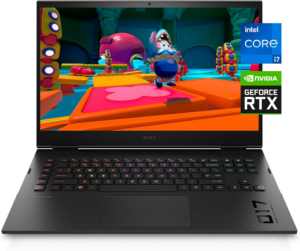Admit it, we’re obsessed with looking good, expressing our uniqueness, or sometimes we just really want to look cool whether it be in person or in the virtual realm, there’s nothing wrong about looking your best all the time. Picture this, you’re in Fortnite, a battle royale, playing alongside numerous gamers like you, you’re wielding some badass weapons right there but sadly, your skin is so lame. There’s nothing there that resembles your personality, it’s just a drab of regular stuff, nothing that stands out. And although you kept saying to yourself that that’s alright, it just perennially bothers you; until yes, finally you caved in because yes, you absolutely deserve to look your best every day and everywhere regardless if it’s the real world, an avatar, or an in-game character. Anyway, that’s still you, right? And who knows when DJ Marshmello is throwing a virtual concert again? You got to be prepared.
What are in-game virtual assets, anyway?
One of the most underrated yet highly profitable subsectors in online gaming is the purchase of virtual assets or in-game items. These in-game items are non-physical goods that you can purchase using the game’s virtual currency or with actual money. Virtual assets can range from skins or character outfits, clothing to weapons, supplies, or anything that bedazzles an avatar, can enhance a player’s game performance, or just elevate his overall gaming experience.
On websites such as Clash.gg, players can not only buy and sell virtual assets but also engage in esports betting, adding another layer of excitement to the gaming experience. The platform provides a safe and regulated environment for enthusiasts to place bets on their favorite teams and players, further blurring the lines between gaming and traditional sports betting.
What’s truly fascinating about the trade of virtual assets is how it has spun from a mere extended in-game feature to a wholly flourishing trade. Like in a traditional free market, the prices are dictated by supply and demand; meaning to say, the market value of each piece of item would usually vary on its rarity and uniqueness thus, the scarcer it is, the more the seller can jack up the selling price. Perhaps, you could say that hardcore gamers are entrepreneurial in nature after all.
How much is it worth?
You’d probably be surprised to learn that the most expensive skin ever sold so far was worth $61,052.63. According to skins.cash, a global marketplace for skins, that item which is a souvenir AWP CS:GO skin Dragon Lore is only one of its kind because it has special stickers from distinctive eSports tournaments like PGL, G2 Esports, Cloud9 and a notable piece from Tyler “Skadoodle” Latham, a prominent professional CS:GO player who was also the MVP during the Boston Major in 2018. Nonetheless, this is just the tip of the iceberg because the projections for the digital goods market are at an all-time high. For instance, in 2017 the estimated value of the virtual assets market was already at a staggering $38.06 billion and five years from now, we’re looking at a projected market value of $189.76 billion (2025).
It’s even more interesting to note that it wasn’t the guns and the ammo that’s pulling in the big bucks. In fact, figures from GamingScan revealed that it is actually the character skins and cosmetics segment that’s raking in the largest number of sales accounting for 37% of the total in-game purchases made by subscribers. Coming in second and third are seasonal passes and battle passes, but if you thought we’re over with anything decorative, you’re wrong because next to the passes are equipment skins. Those CS:GO skins are pretty much in high demand!
Selling In-Game Virtual Assets
One of the primary reasons why droves of gamers are getting hooked on collecting in-game items is the prospect of turning it into earnings whether cash or any digital currency that has a monetary value. A skins reseller we have chanced upon, briefly shared with us how he has been selling skins in the Steam Community Market. According to him, he pictures the digital goods market like the stock market. He purchases skins at a bargain, stores them and keeps them until the developer stops producing them. Until then, he whips it out again and carefully ogles the market to gauge the supply and demand available before putting his item up for sale.
It is this customary practice in the gaming community that gave birth to decentralized virtual asset trading platforms like OPSkins, WAX Marketplace, Gameflip, Dmarket, and skins.cash that offer a safer and more secure way of trading your in-game items either for cash or game credits. And with tens of thousands to billions-worth of transactions processed every day, it is not surprising to see digital firms getting a piece of the action. Are you even aware that you can use your digital assets as collateral to apply for loans from digital lending companies? These types of startups utilize the power of blockchain technology to issue loans backed by cryptocurrencies.
Final Thoughts
The vibrant and dynamic ecosystem of in-game virtual assets is a burgeoning industry and yet, not a lot of people are paying attention because majority of us are keen on getting into international eSports tournaments or becoming a streamer, but obviously this market is pulling in billions of dollars every year not to mention, it’s taking leverage on a lot of things–blockchain, free market, and gamer’s psychology among others. It’s definitely going to be the next big thing or perhaps, it already is.
Author Name: Samuel Stewart
Short Author Bio: Samuel Stewart has been interested in gaming and computers ever since he got a computer from his father in 1999. Being the Editor-in-Chief over GamingScan allows him to follow his passion for gaming.
Author’s Website URL: https://www.gamingscan.com/
















